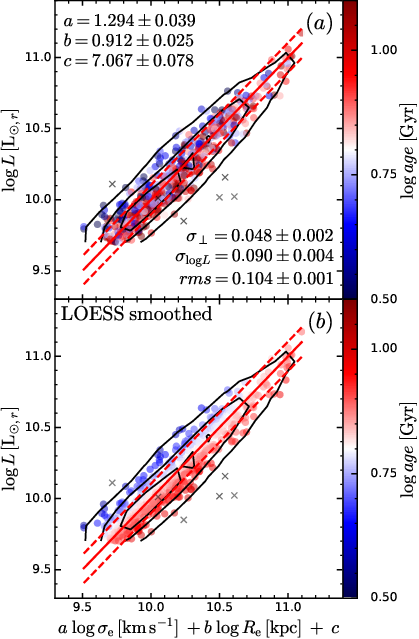
Stellar populations relations on the Fundamental Plane
Early-type galaxies (ETGs) are characterised by regular shapes and smooth stellar profiles. They typically harbor old stellar populations and have no current star formation. In the parameter space defined by luminosity L, velocity dispersion σ and half-light radius R, ETGs occupy a narrow locus, the Fundamental Plane (FP). The existence of this plane is explained by the dynamically relaxed nature of ETGs and by the virial theorem. However, the FP is 'tilted' with respect to the virial plane, an effect that has been shown to derive from a systematic variation of the mass-to-light ratio \(\Upsilon\) along the virial plane (Cappellari et al. 2006, 2013a).

In Barone et al. (2018), we have shown that the stellar population properties of ETGs are linked to the structural parameters of galaxies. With the large sample size of SAMI, we aim at quantifying the contribution of the stellar population trends to the tilt and scatter of the FP. In D'Eugenio et al. (2021), we find that stellar population trends contribute approximatel 50-75% of the FP intrinsic scatter. This is important not only for galaxy evolution studies, but also for cosmology: the FP intrinsic scatter will be the hard limit to the precision of FP-inferred distances, hence to the precision of near-field cosmology studies. In particular, the intrinsic scatter of the FP has been a limiting factor in its application as a distance indicator (Magoulas et al. 2012). Stellar population age has been shown to be linked to the scatter (see figure), so that taking this parameter into account could reduce the scatter thereby improving the precision of the FP as a tool for Cosmology. Past attempts in this sense have been frustrated by noisy age measurements. With SAMI, we can measure precise ages for a large sample of ETGs, therefore it is worthwhile to check whether we can effectively reduce the measurement uncertainties on FP-derived distances.